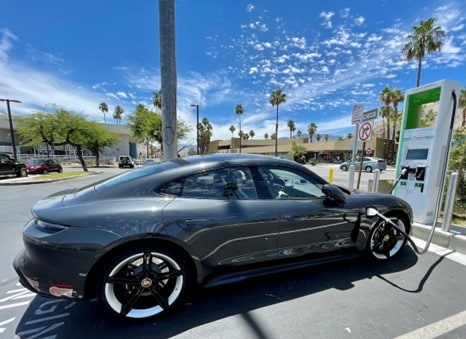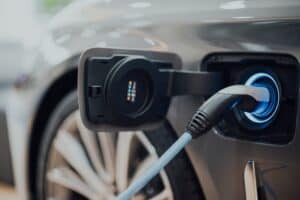The auto industry stands at a crossroads. We are at a defining moment that is reshaping an entire industry and redefining the future trajectory of our transportation landscape, an inflection point. Driven by evolving policies, changing consumer preferences, and technology advancements, the automotive industry is ushering in a new era of electric vehicles (EVs). Let’s dive into the seismic shift that is reshaping the automotive industry and explore the strategies necessary to successfully navigate the transformation.
Policies Catalyzing Change
In 2023, a global and national wave of policy changes set the stage for the rapid adoption of electric vehicles. Governments worldwide are committing to phasing out traditional internal combustion engine (ICE) vehicles within the next decade.
In April 2023, the Biden administration announced rigorous restrictions on auto emissions, speeding up a transformation in the transportation sector. In May 2023, the U.S. Environmental Protection Agency (EPA) announced proposed new carbon pollution standards for coal and gas-fired power plants that are intended to protect public health, reduce harmful pollutants, and deliver up to $85 billion in climate and public health benefits over the next two decades.
This resolute shift signifies a collective push towards a cleaner, greener transportation future. The significance of this policy evolution cannot be underestimated, as it shapes both automaker strategies and consumer expectations.
Automaker Responses: A Race to Electrification
The automotive industry is witnessing a swift response from automakers, with many unveiling ambitious plans to pivot toward all-electric lineups. Industry giants like General Motors, Volvo, and Jaguar Land Rover have announced their intentions to transition away from ICE vehicles and completely embrace EVs. This fundamental shift marks a transformation of the entire manufacturing and supply chain ecosystem.
At least nine states plan to ban sales of new gas-powered cars after 2035, with several other states planning to follow this lead. Traditional gas-powered cars on the road would not be affected, and drivers would still be allowed to buy used gas-powered cars. Automakers and dealerships, however, would be prohibited from selling new gas vehicles in states where bans are in place.
At the federal level, the EPA developed a proposal essentially requiring that 67% of new car sales be electric vehicles by the 2032 model year.
The EPA’s proposal presents a significantly more ambitious timeline than what President Biden laid out in an August 2021 executive order. Biden’s order called for 50% of new vehicle sales to be electric vehicles or plug-in hybrids by 2030, while the EPA proposal implies 60% of sales would need to be EVs by 2030 — not including hybrids.
The Pandemic’s Role in Accelerating Change
The unexpected disruptions caused by the COVID-19 pandemic have had far-reaching consequences, and the automotive sector is no exception. As lockdowns curtailed daily commutes and travel, a heightened awareness of environmental impact emerged. Gasoline-powered vehicles, synonymous with pollution, saw a dip in demand. This pandemic-induced dip in traditional vehicle usage triggered a shift in consumer preferences, with more people considering sustainable alternatives like EVs.
Technological Advancements: The Battery Revolution
Between 2022 and the present, we’ve seen the auto industry take significant strides in battery technology. The advancements have addressed key concerns that have traditionally hindered EV adoption. From limited driving ranges to extended charging times, battery innovations have managed to bridge the gap between electric and traditional vehicles.
This technological progress has translated into an expanding market for electric vehicles. Automakers are making bold commitments to overhaul their portfolios, bringing forth a diverse array of EV models that cater to varying consumer preferences. The increase in EV choices, ranging from compact cars to SUVs and even electric pickups, marks a watershed moment in EV evolution.
According to Reuters, Toyota has recently announced a “technological breakthrough” to address durability problems in solid-state batteries, targeting commercialization over 2027-2028. Solid-state batteries can hold more energy than current liquid electrolyte batteries. Automakers and analysts expect them to speed the transition to EVs by addressing a major consumer concern: range.
At the high end of the market, Toyota said it would produce an EV with a more efficient lithium-ion battery offering a range of 621 miles. By comparison, the long-range version of the lithium-ion-powered Tesla Model Y, the world’s best-selling EV, can drive for about 329 miles.
An EV powered by a solid-state battery would have a range of 745 miles and charging time of just 10 minutes, Toyota said. In comparison, the Tesla Supercharger network, the largest of its kind, offers the equivalent of 199 miles of charge in 15 minutes.
Challenges on the Horizon
The industry will encounter emerging challenges and uncertainties as the automotive landscape transforms. Below we discuss three of the most prevalent and complex issues.
Volume Fluctuations: The transition to electric vehicles introduces a new layer of complexity in demand forecasting. Factors such as EV adoption rates, government and tax incentives, and technological breakthroughs introduce unpredictability into production volumes for suppliers. The result is a more challenging environment for suppliers to effectively manage their operations.
Hybrid vehicles have much lower inventory levels, supporting Toyota’s argument that consumers want a stepping stone to fully electric cars.
While Toyota recently announced the new battery technology that could double the range of future EVs, it’s sticking with a mix of hybrids, plug-in hybrids, and pure EVs for the foreseeable future, while charging infrastructure continues to be built in the U.S.
Financial Resilience: Auto suppliers have long operated in a competitive environment with slim margins. The pivot to EVs adds another layer of complexity, requiring a delicate balance between competitive cost efficiencies and financial sustainability. Suppliers need to carefully navigate pricing strategies while factoring in the unique product costs and features of EV components.
One pricing incentive is the EV tax credit, up to $7,500 for new vehicles, Certain used/previously owned EVs can qualify for a tax credit of up to $4,000 or 30% of the sales price (whichever is less). Beginning in 2024, the EV tax credit may be used as a discount when purchasing the vehicle. However, one of the most important points is that there are income limits for the clean vehicle tax break.
Regulatory Dynamics: EV adoption is intertwined with the dynamic regulatory landscape. Changes in trade policies, tariffs, and government incentives directly impact market dynamics. Staying attuned to these regulatory shifts and their implications is paramount for industry stakeholders.
Strategies for Success
Amid these and other challenges, successful navigation requires a strategic approach, with four main pillars:
Diversification and Adaptation: Suppliers will need to diversify their offerings and expertise to align with the evolving EV market. Developing specialized competencies in EV components is a strategic move that positions suppliers for growth.
One client in fluid thermal management of battery electric vehicles (BEV) learned to diversify, adapt, and specialize for growth, since fluid thermal management directly influences mileage, charging duration, and overall operational strategy. In thermal management of ICE vehicles, heat loss from an engine is diverted to the environment via exhaust and cooler or reused to heat the passenger cabin. The client company expanded its product lines to supply a full range of thermal management parts and integrated systems for EV, Hybrid Electric Vehicles (HEV), and traditional ICE.
Resilient Financial Planning: Suppliers will need to engage in robust financial modeling to ensure they strike a balance between competitiveness and profitability. Comprehensive financial planning is indispensable for the industry’s longevity.
Navigating Regulatory Complexities: Staying informed and adaptable in the face of shifting regulations is vital. Companies will need to develop the capability to assess and respond to regulatory changes impacting operations.
Embracing Innovation: Innovation is critical to business success, and the transformation to EVs presents an opportunity for innovation. Companies embracing technological advancements and incorporating sustainable practices into their operations will gain a competitive advantage, yet the spend will need to be strategically well-planned and financially appropriate to ensure continuous innovation.
When working with one client to successfully transition from power drive trains to EV drive trains, it was essential for the entire company to embrace both the technology and innovation on a continuing basis going forward.
2024 and Beyond: Paving the Road Ahead
The road ahead promises continued growth and evolution. Battery technology advancements will lead to extended driving ranges, faster charging times, and enhanced performance. With decreased manufacturing costs and intensified competition, electric vehicle ownership will become more attainable for a broader range of consumers.
Steering Through Change
The auto industry’s inflection point marks a significant transformation, and we are here, now. The pivot to electric vehicles is reshaping the very dynamic of the industry, from manufacturing processes to consumer preferences. To navigate this period of change, stakeholders will need to be proactive, agile, and adaptable. With a strategic financial and operational plan for embracing innovation, preparing for regulatory shifts, and adopting those resilient financial strategies, industry players can both survive and thrive in the new era of electric mobility.
Contact Ryan Gross at: rgross@getzlerhenrich.com
Sources:
https://www.autobodynews.com/the-future-of-internal-combustion-engines.html
https://money.com/states-banning-gas-powered-cars/
https://money.com/ban-gas-cars-sales-ev-adoption/?ref=/states-banning-gas-powered-cars/
https://www.cnbc.com/2023/07/30/a-key-test-for-ev-sales-and-the-adoption-curve-is-coming.html
https://www.iea.org/reports/global-ev-outlook-2023/executive-summary


